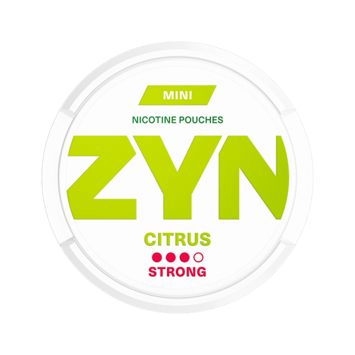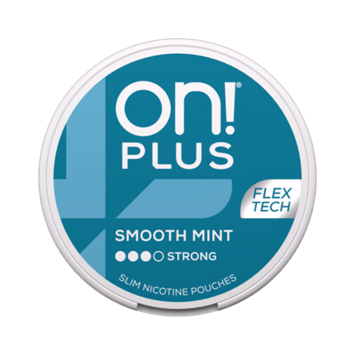nicotine pouches and gum health
Philip Plainstein

Oral nicotine pouches have gained popularity in the UK as a modern, tobacco-free alternative to traditional smoking and nicotine replacement therapies. These small, flavoured pouches are designed to be placed between the upper lip and gum, delivering nicotine quickly into the bloodstream. While they are marketed as a safer option, their impact on gum health has raised concerns among dental professionals and users alike.
Recent studies indicate that oral nicotine pouches contain synthetic nicotine and flavourings but no tobacco. They are often compared to snus and other smokeless tobacco products, though they differ in composition. Unlike traditional nicotine replacement therapies (NRTs) like patches or lozenges, oral nicotine pouches are not FDA-approved for quitting smoking, which has sparked debates about their safety and efficacy.
The rise of these products in the UK has led to increased scrutiny of their oral health implications. Research suggests that frequent use may cause gum irritation, recession, and other issues. This guide explores the basics of oral nicotine pouches, their comparison to other nicotine products, and the potential risks to gum health, providing you with essential insights to make informed decisions.
Insights into nicotine pouches and gum health
Oral nicotine pouches have become a topic of interest in discussions about modern alternatives to smoking. These products, placed between the upper lip and gum, deliver nicotine without tobacco. While marketed as a safer option, their impact on oral health, particularly gum health, has sparked debate.
Research indicates that oral nicotine pouches contain synthetic nicotine and flavourings. Unlike traditional nicotine replacement therapies, these pouches are not FDA-approved for quitting smoking, raising questions about their safety and efficacy. Studies suggest that frequent use may lead to gum irritation and recession.
Comparisons with traditional tobacco products reveal differences in composition and impact. Nicotine pouches are often compared to snus but differ in their tobacco-free status. The rise of these products in the UK has led to increased scrutiny of their oral health implications.
Evidence from clinical studies highlights the potential risks associated with oral nicotine pouches. For instance, a study published in the Public Health Agency of Sweden reports self-reported use of tobacco and nicotine products, emphasizing the need for informed decisions regarding oral health.
The Rise of Tobacco-Free Nicotine Products in the United Kingdom
Tobacco-free nicotine products have emerged as a significant trend in the UK, offering a modern alternative to traditional smoking methods. These products, particularly nicotine pouches, have gained traction due to their innovative approach and appeal to those seeking alternatives to smoking.
Emergence of Nicotine Pouches
Nicotine pouches have become a prominent choice among consumers looking for a tobacco-free option. Since their introduction around 2019, these pouches have been marketed as a safer, more convenient alternative to smoking. Their popularity stems from their ease of use and the variety of flavors available, which appeal to a broad audience.
Market Trends and Consumer Adoption
The adoption of nicotine pouches has grown rapidly in the UK. Market trends indicate a steady increase in their popularity, particularly among former smokers. These products are positioned as a competitive alternative to traditional smokeless tobacco products, offering unique selling points such as being tobacco-free and available in appealing flavors. Surveys and usage statistics further support the analysis of consumer behavior, showing a significant rise in their use over the past few years.
Data from recent surveys highlights the growing consumer base, with a notable prevalence of use among specific demographics. The competitive positioning of these products in the market underscores their appeal and the factors driving their adoption. As the market continues to evolve, nicotine pouches are likely to remain a key player in the tobacco-free nicotine product landscape.
Composition and Ingredients of Nicotine Pouches
Nicotine pouches are designed to deliver nicotine without tobacco, offering a unique blend of ingredients. These pouches typically contain nicotine, water, microcrystalline cellulose, and food-grade additives, including flavourings and sweeteners. The combination of these components ensures a consistent nicotine delivery while maintaining user appeal.
Active Nicotine and Other Components
The primary active ingredient in nicotine pouches is synthetic nicotine, which is designed to mimic the effects of traditional nicotine. The non-tobacco substrate plays a crucial role in how these pouches interact with the oral mucosa. This substrate helps in delivering nicotine efficiently while minimizing potential irritations to the mouth tissues.
Food-Grade Additives and Flavourings
Food-grade additives and flavourings are essential for enhancing the user experience. These additives not only improve the taste but also ensure the product meets safety standards. For instance, sweeteners are used to mask any bitter flavours, making the pouches more palatable. The careful selection of these ingredients aims to provide a safe and enjoyable experience without compromising on nicotine delivery.
A study by the Public Health Agency of Sweden highlights the importance of understanding the composition of nicotine pouches, stating, “The ingredients in these products can significantly impact oral health, particularly the oral mucosa.”
Understanding the composition of nicotine pouches is vital for assessing their safety and efficacy. By examining each ingredient’s role, users can make informed decisions about their use and potential risks, especially concerning periodontal disease.
Delivery Methods and Usage Patterns
Understanding how nicotine is delivered and used is crucial for assessing its impact. Nicotine pouches work by releasing nicotine through the buccal mucosa, a process similar to traditional nicotine replacement therapies (NRTs). This method ensures quick absorption into the bloodstream, mimicking the rapid delivery of nicotine found in smoking.
How Nicotine is Absorbed Through the Oral Mucosa
The absorption process involves placing a pouch between the upper lip and gum. Here, the nicotine is released and absorbed through the oral mucosa. This delivery method is efficient, with studies showing that up to 86% of nicotine in pouches is in its free-base form, which is readily absorbed. The pH level of the pouches, typically around 8.8, further facilitates this process.
Research indicates that nicotine pouches release most of their nicotine within the first 20 minutes of use. This rapid release is comparable to other NRTs, such as lozenges or gums, but without the need for chewing or sucking. The convenience and discreet nature of pouches contribute to their growing popularity.
Usage Patterns and Comparisons
Usage patterns for nicotine pouches mirror those of traditional NRTs, with users often employing them in situations where smoking is not allowed. However, unlike NRTs, pouches are not FDA-approved for smoking cessation, raising questions about their efficacy for this purpose. Systematic reviews highlight that while pouches deliver nicotine effectively, their role in reducing smoking rates remains unclear.
The frequency and duration of pouch use can influence nicotine uptake and potential health outcomes. Regular users may experience higher nicotine exposure, which could impact oral tissues. However, the exact relationship between usage patterns and health risks is still being studied.
Key Findings from Systematic Reviews:
- Nicotine pouches deliver nicotine efficiently through the oral mucosa.
- Usage patterns resemble those of traditional NRTs but lack FDA approval for smoking cessation.
- Regular use may lead to higher nicotine exposure, potentially affecting oral health.
In summary, nicotine pouches offer a modern, tobacco-free alternative for nicotine delivery, with usage patterns and absorption methods comparable to traditional methods. However, their long-term effects and efficacy for smoking cessation require further investigation.
Comparing Nicotine Pouches with Nicotine Replacement Therapies
Modern tobacco-free products have sparked debates about their efficacy compared to traditional methods. Nicotine pouches and gum are two popular options, each with distinct advantages and drawbacks.
Nicotine Gum versus Modern Pouches
Nicotine gum has long been a standard in smoking cessation, offering a fast-acting solution. However, its effectiveness can vary. A recent study revealed that only 13.83% of gum users achieved abstinence at 12 weeks, compared to 6.56% for patches. This highlights the challenges gum users face in maintaining long-term abstinence.
Nicotine pouches, on the other hand, provide a discreet and convenient alternative. They deliver nicotine efficiently through the oral mucosa, with studies showing up to 86% absorption. This rapid delivery mimics the quick relief smokers seek, making pouches appealing for immediate craving management.
Key Differences:
- Delivery Speed: Pouches offer faster absorption, similar to smoking, while gum’s effectiveness can wane over time.
- User Satisfaction: Pouches are often preferred for their ease of use and variety of flavors, enhancing user experience.
- Regulatory Status: Gum is FDA-approved for smoking cessation, whereas pouches are not, raising questions about their efficacy for this purpose.
These findings influence clinical recommendations, suggesting that while pouches are a promising option, their role in smoking cessation requires further study. As the market evolves, understanding these differences will help users make informed choices.
Mechanisms of Nicotine on Oral Tissues
Understanding how nicotine affects oral tissues is crucial for assessing its overall impact. Research has shown that nicotine can cause cellular changes in the mouth, potentially leading to various oral health issues. These changes occur at a microscopic level, affecting how tissues respond to stimuli.
Cellular Impact on the Gum and Mucosa
Nicotine interacts with gum and mucosal cells in a way that can alter their normal function. Studies have found that prolonged exposure to nicotine can lead to reduced blood flow and oxygen delivery to these tissues. This can result in cellular changes that may weaken the gum structure over time.
A study published in the Public Health Agency of Sweden highlights that nicotine exposure can lead to significant changes in the oral mucosa, potentially increasing the risk of periodontal disease.
Role in Gingival Recession and Tissue Response
Nicotine’s role in gingival recession is a key area of study. Research indicates that frequent use of nicotine products can cause gum irritation and recession. A study by the Public Health Agency of Sweden found that self-reported use of such products was linked to a higher incidence of gum recession and other oral health issues.
These findings suggest that while nicotine pouches may offer a tobacco-free alternative, their impact on oral health should not be overlooked. Users should be aware of the potential risks and consider these factors when making informed decisions about their use.
Potential Oral Health Risks and Periodontal Effects
As the popularity of modern nicotine products grows, so does the concern over their impact on oral well-being. While these products offer a tobacco-free alternative, their prolonged use may lead to specific oral health challenges.
Localised Gum Recession and Lesion Formation
Clinical studies and case reports highlight a concerning trend: prolonged use of certain products can cause localised gum recession. This issue arises when the gums gradually recede, exposing more of the tooth root. Additionally, some users have reported the formation of lesions on the oral mucosa, which can be uncomfortable and may lead to further complications if not addressed.
A study by the Public Health Agency of Sweden found that frequent use of these products was linked to a higher incidence of gum recession and other oral health issues. This underscores the importance of monitoring your gum health if you use such products regularly.
| Effect | Description |
|---|---|
| Gum Recession | Prolonged exposure may cause the gums to recede, exposing tooth roots. |
| Lesions | Small, often painful sores can develop on the oral mucosa. |
| Inflammation | Chronic inflammation may lead to periodontal disease. |
Systemic and Inflammatory Considerations
Beyond local effects, there are broader systemic risks to consider. Nicotine can alter blood flow to the gums, reducing oxygen delivery and potentially weakening the periodontal structure. This vasoconstriction can make the gums more susceptible to disease.
Nicotine also influences inflammatory responses. While it may have anti-inflammatory properties at low doses, chronic exposure can disrupt the balance, leading to heightened inflammation. This can exacerbate conditions like periodontitis, making gum disease management more challenging.
Systematic Review Findings on Nicotine Product Effects
Recent systematic reviews have shed light on the effects of nicotine pouch products, offering valuable insights into their safety and efficacy compared to traditional cigarettes. These studies, which analyse multiple clinical trials and user experiences, provide a comprehensive understanding of the benefits and risks associated with these products.
Key Insights from Clinical Studies
Data from systematic reviews indicate that nicotine pouch products may be significantly lower-risk compared to cigarettes, though long-term effects remain under-researched. These studies highlight several key findings:
| Aspect | Findings |
|---|---|
| Risk Comparison | Nicotine pouches pose lower health risks than cigarettes, with no carcinogenic properties found. |
| Nicotine Delivery | Pouches deliver nicotine efficiently, with up to 86% absorption through the oral mucosa. |
| Health Impacts | Reduced risk of oral diseases like cancer and periodontal disease compared to smoking. |
The analysis includes comparisons of nicotine delivery, user satisfaction, and overall health impacts. Practical examples and study results provide a clear understanding of current evidence in the field.
Flavourings, Additives and Their Oral Health Implications
Flavourings and additives in oral nicotine products play a crucial role in both user appeal and oral health outcomes. These components, including sugar substitutes and menthol, are designed to enhance the user experience but may also impact oral tissues.
Effects of Sugar Substitutes and Menthol
Sugar substitutes, such as sucralose, are commonly used to mask the bitterness of nicotine. However, research suggests that these sweeteners can increase the risk of dental caries due to their sugar-like properties. Menthol, on the other hand, adds a cooling sensation but may cause irritation to the gingival tissues, potentially leading to inflammation and gum recession.
A study comparing these additives to those in Swedish snus highlights significant differences. Swedish snus typically contains fewer flavour additives and lower sugar substitutes, which may contribute to a lower risk of oral health issues compared to nicotine pouches.
Key Findings:
- Sugar substitutes can increase the risk of dental caries.
- Menthol may irritate gingival tissues, leading to inflammation.
- Swedish snus generally contains fewer harmful additives.
Future regulatory considerations may focus on limiting the use of certain flavour additives to mitigate oral health risks. Users should be aware of these potential impacts and consider them when choosing oral nicotine products.
| Effect | Description |
|---|---|
| Sugar Substitutes | May increase dental caries risk. |
| Menthol | Can cause gingival tissue irritation. |
| Swedish Snus Comparison | Contains fewer harmful additives. |
Safety and Regulatory Perspectives in the UK
The regulatory framework surrounding modern nicotine products in the UK is evolving to address safety concerns and public health interests. As these products gain popularity, understanding the current guidelines and market regulations is essential for both consumers and stakeholders.
Current Guidelines and Market Regulations
In the UK, nicotine pouches are regulated under the General Product Safety Regulations (GPSR) and the Tobacco and Related Products Regulations 2016. These frameworks ensure that products meet specific safety standards before they are sold. Notably, the British Standards Institution (BSI) recommends a maximum nicotine content of 20 mg per pouch to balance user needs and safety.
These products are distinct from traditional tobacco items in legal terms. While conventional tobacco products face strict advertising bans, nicotine pouches operate under different guidelines, though they are subject to age restrictions. This differentiation reflects their unique position in the market.
Despite these regulations, challenges remain. The rise in popularity has led to calls for stricter oversight. Public health groups advocate for clearer guidelines to protect consumers, particularly concerning nicotine content and product safety.
A study by the Public Health Agency of highlights the importance of understanding product composition and its implications for user safety. This research underscores the need for informed decision-making and regulatory adjustments to mitigate potential risks.
In summary, while the UK’s regulatory approach provides a framework for safety, ongoing discussions and studies are crucial to ensure these products meet public health goals and user expectations.
Nicotine Pouches as a Smoking Cessation Option
Research and surveys suggest that nicotine pouches may offer a simpler alternative to traditional smoking cessation therapies. These products have gained attention for their ease of use and potential to reduce cigarette consumption. However, their effectiveness compared to established methods like nicotine gum and patches remains under debate.
Effectiveness Compared to Traditional Therapies
Studies indicate that nicotine pouches deliver nicotine efficiently, with up to 86% absorption through the oral mucosa. This rapid delivery mimics the quick relief smokers seek, making pouches appealing for immediate craving management. However, unlike nicotine gum, which is FDA-approved for smoking cessation, pouches lack such approval, raising questions about their efficacy for this purpose.
Potential Benefits and Limitations
While nicotine pouches provide a discreet and convenient option, their role in reducing tobacco use is still being studied. Data shows that 73% of current pouch users also smoke cigarettes, suggesting that pouches may not fully replace smoking habits. Additionally, the lack of regulatory oversight in the UK, where pouches are not classified as medical products, adds to the uncertainty surrounding their effectiveness.
- Nicotine pouches offer a modern, tobacco-free alternative for smokers seeking to quit.
- They provide rapid nicotine delivery, similar to smoking, but without the need for chewing or sucking.
- Current data indicates that while pouches may reduce cigarette consumption, they are not yet proven as a standalone smoking cessation tool.
In conclusion, nicotine pouches present both opportunities and challenges as a smoking cessation option. Their ease of use and efficient nicotine delivery are significant advantages, but their long-term effectiveness and regulatory status require further investigation to fully assess their value in helping smokers quit.
Investigating Oral Mucosal Changes in Users
Research into the effects of prolonged use of pouch products has revealed significant changes in the oral mucosa. These findings are crucial for understanding the potential risks associated with these products.
Visual and Histopathological Findings
Studies have shown that frequent use of pouch products can lead to visible alterations in the oral mucosa. These changes include inflammation, redness, and lesions. Histopathological examinations have identified specific cellular changes, such as parakeratosis and dyskeratosis, which are often associated with prolonged use.
Dentist Observations and Clinical Signs
Dentists have reported several clinical signs in users of pouch products. These include gum recession, mouth ulcers, and changes in the texture of the oral mucosa. Such observations highlight the need for regular dental check-ups for individuals using these products.
Key Findings:
- Visible changes in the oral mucosa, such as redness and lesions.
- Cellular alterations, including parakeratosis and dyskeratosis.
- Clinical signs like gum recession and mouth ulcers.
For more information on how pouch products affect your gums, visit our detailed guide: What Do Nicotine Pouches Do to Your Gums.
User Experiences and Research Insights
Consumer surveys reveal diverse experiences with modern nicotine products, offering valuable insights into user satisfaction and observed changes in oral tissues. These findings provide a real-world perspective on the impact of these products.
Consumer Surveys and Usage Patterns
Research indicates that tobacco users report varied responses to these products. Many appreciate the convenience and discretion they offer, while others note challenges in maintaining oral hygiene. Surveys highlight a significant level of concern among consumers regarding long-term gum health effects.
Positive aspects reported by users include effective nicotine delivery and a reduction in cigarette consumption. However, challenges such as gum irritation and dry mouth are also common. These responses underscore the importance of understanding individual tolerance and proper usage techniques.
Key Insights from User Feedback:
- 73% of young tobacco users also smoke cigarettes, indicating dual use.
- 49% of young users also vape, suggesting multiple nicotine intake sources.
- Proper pouch placement and side switching are recommended to minimize gum discomfort.
For more information on how these products affect your gums, visit our detailed guide: How Do Nicotine Pouches Work.
These findings emphasize the need for further research into the long-term effects of these products on oral health. While they offer a promising alternative to smoking, understanding their impact on gum health is crucial for informed decision-making.
Addressing Misconceptions and Health Risks
When discussing modern nicotine delivery systems, it’s essential to separate fact from fiction. Many misconceptions surround these products, particularly when comparing them to e-cigarettes and traditional smoking methods. This section aims to clarify these misunderstandings using robust evidence from systematic reviews and meta-analyses.
Dismantling Common Myths
One common myth is that nicotine pouches pose the same risks as e-cigarettes. However, systematic review meta-analyses show that pouches have a lower-risk profile compared to both e-cigarettes and traditional smoking. Here are some key insights:
- Nicotine pouches do not produce harmful aerosols like e-cigarettes, reducing respiratory risks.
- Systematic reviews indicate that pouches contain fewer toxic chemicals than e-cigarettes, making them a safer alternative.
- Research shows that pouches are less likely to cause oral health issues compared to smoking, though moderate risks still exist.
Key findings from systematic reviews highlight that pouches are significantly less harmful than cigarettes, though not entirely risk-free.
These insights help clarify the actual health risks and benefits, providing a balanced view for informed decision-making.
Future Research and Emerging Trends in Oral Nicotine Products
As oral nicotine products continue to evolve, future research is set to uncover new insights into their effects and innovations. You may be interested in understanding the current gaps in research, particularly regarding the long-term effects of these products.
Identifying Research Gaps
Current studies have laid the groundwork, but there is still much to explore. Ongoing experimental studies are focusing on:
- The biological effects of nicotine on oral tissues
- The impact of different materials used in product design
- The role of flavourings and additives
These studies aim to fill the gaps in our understanding, ensuring safer and more effective products.
Innovative Product Developments
Innovations in material science are paving the way for safer products. Researchers are exploring:
- New materials that reduce the risk of addiction
- Advanced delivery systems for controlled nicotine release
- Biodegradable options to minimise environmental impact
These advancements could significantly influence the future of oral nicotine products.
Emerging trends suggest a focus on:
- Regulatory frameworks to ensure product safety
- Public education campaigns to inform consumers
- Technological improvements to reduce addiction potential
As research progresses, these developments will likely shape the market and consumer preferences.
By staying informed about these trends, you can make better decisions about your use of oral nicotine products.
Final Reflections on Oral Health and Nicotine Alternatives
In concluding our exploration of oral health and modern nicotine alternatives, it is clear that these products present a complex landscape of benefits and risks. While they offer a tobacco-free option for those seeking to reduce harm, their impact on oral tissues, particularly the gums, remains a critical area of concern.
Clinical assessments have highlighted that frequent use of these products can lead to gum irritation and recession. Studies focusing on epithelial cell changes reveal alterations that may weaken the periodontal structure over time. These findings underscore the importance of ongoing vigilance and further research to fully understand the long-term effects.
The balance between the benefits of harm reduction and the potential risks to oral health is a key consideration. Users and clinicians alike must weigh the advantages of these alternatives against the need for careful monitoring and maintenance of oral hygiene. As research continues to evolve, it will be essential to stay informed about the latest developments and recommendations.
In summary, while modern nicotine alternatives provide a promising avenue for reducing tobacco-related harm, their impact on oral health necessitates a cautious and informed approach. By prioritising further research and maintaining clinical vigilance, we can better navigate the risks and benefits of these products in the years to come.









